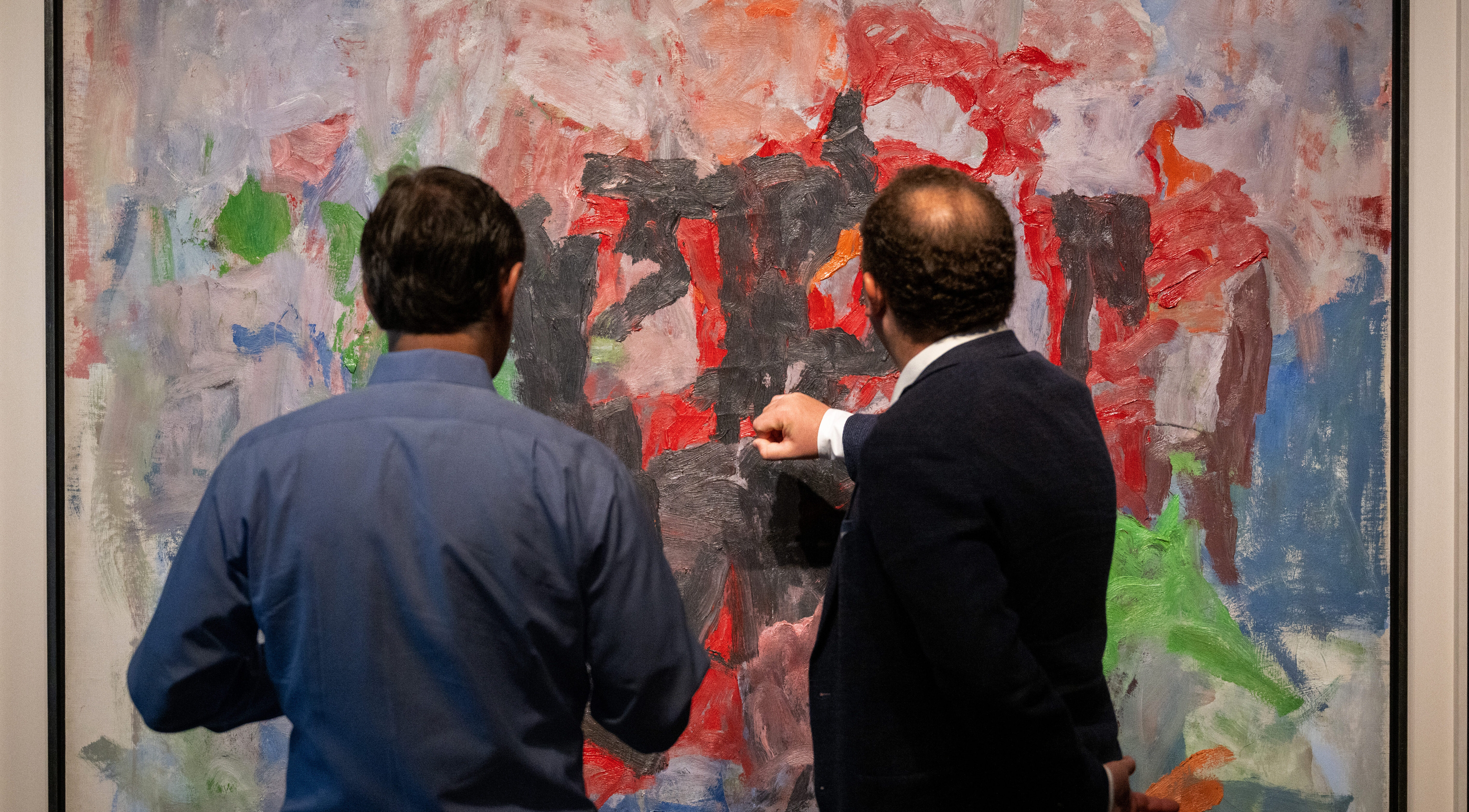Remember when celebrities were paying hundreds of thousands of dollars for pictures of cartoon monkeys? The “Bored Ape” craze, promoted by the likes of Justin Bieber and Paris Hilton — not to mention the prestigious Sotheby’s auction house — marked a high point for the crypto assets known as NFTs, touted as a fashionable new frontier in art collecting.
Today, the Bored Ape images have lost almost 90% of their value from their 2022 peak, and investors are suing Sotheby’s, Bieber, Hilton and others for misleading them.
The NFT massacre is only one dramatic sign of a wider unease taking hold of the art market. For months there have been ominous reports of cooling demand at auctions and fairs. In June, the flagship modern and contemporary auction at Christie’s took 66% less than the previous year, and even highly bankable artists such as Willem de Kooning and Jean-Michel Basquiat have been struggling to find buyers.
Do these jitters simply reflect the general turbulence in the economic climate? Yes, but also no. As the latest report by Art Basel and UBS confirms, the art market has become dependent on a super-rich class of investors who are largely immune from fluctuations in the wider economy. Global sales actually increased last year, coming close to their 2014 peak of $68.2 billion, but this growth was driven by the most expensive artworks and the most successful dealers. The lower echelons of the market stagnated or declined.
The NFT collapse illustrates the demise of aspirational but merely affluent collectors, who have been stung by falling tech stocks, crypto crashes, inflation and rising interest rates. By contrast, as the Art Basel/UBS report notes, global billionaire wealth has increased by more than a third over the course of the Covid pandemic and ensuing economic turmoil.
These ultra-high-net-worth individuals — increasingly drawn from the Middle East, Far East and Africa, as well as Western countries — have reshaped the art industry since the 2008 crash. Their exclusive tastes, mediated by a globetrotting circus of elite galleries, dealers, advisors and artists, determine what is considered valuable.
And yet the distress signals of recent months suggest this reliance on the wealthiest collectors has only forestalled the inevitable reckoning. There simply aren’t enough of them, or of the works they crave, to provide continuous growth. “Once someone has their de Kooning, they don’t necessarily want to buy another,” commented one art advisor after this summer’s disappointing Christie’s auction.
This partly explains why it is no longer unusual for contemporary artists to fetch big sums at auction while they are still alive. The money needs somewhere to go. But such speculation on faddish works will likely lead to heavy losses down the line (recall how Damien Hirst’s prices plummeted after 2008). Meanwhile, governments have been cracking down on money laundering via artworks, removing one of the biggest incentives for the super-rich to collect them.
As these pressures continue to mount on an increasingly hollowed-out market, it’s not difficult to see how a crash could come about. The financial value of art is ultimately a matter of confidence, and it only takes a few dire auctions for the panic to spread.











Join the discussion
Join like minded readers that support our journalism by becoming a paid subscriber
To join the discussion in the comments, become a paid subscriber.
Join like minded readers that support our journalism, read unlimited articles and enjoy other subscriber-only benefits.
Subscribe